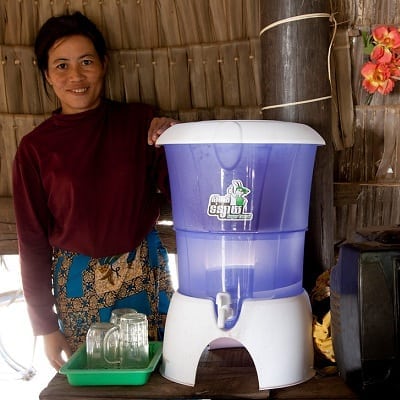Access to safe drinking water is a huge problem around the world. There are many solutions that have been implemented in different communities, but the treatment of water can usually be split into two different approaches. One is to treat water at the municipal or community level. This often means a large investment in infrastructure and a trained knowledgeable party to oversee maintenance of the water system. The other approach is to treat water at the point of use. The Rabbit ceramic water purifier distributed by International Development Enterprises (IDE) is a point of use solution, where small inexpensive filters are used by individual families to treat water for drinking and cooking.
Clay and sandstone water filters have been used for over a thousand years. The Sri Lanka National Museum has one on display that is 1200 years old, and the design has not changed much. Each filter looks like a large clay flower pot. When water is poured into the filter, it slowly seeps through the clay material and drips into a storage container. The filter works like a sieve because the clay used to make it is porous. These tiny pores are large enough to allow water to seep through, but small enough to trap bacteria and other contaminants.
The Rabbit ceramic filter design treats about 2 liters of water per hour, adding up to 40 liters per day. This is sufficient for most families.
IDE and Potters for Peace have thoroughly documented the construction and use of the Rabbit filter. Pictorial manuals and videos explain how to use the filter and are very easy to understand for end users of the product. No training is involved in filter use. The groups have also created complete guides that explain how to manufacture these filters on a large scale, outlining the machines, manufacturing procedures, materials and assembly instructions. Guides even suggest how to set up a Rabbit filter business and factory.

